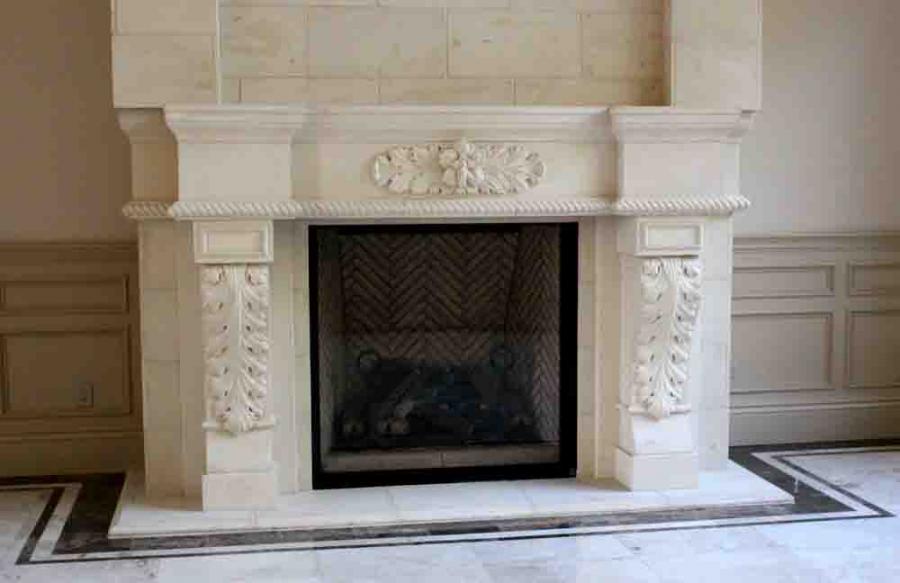Dealing With Foundation Problems

When it comes to home improvements, sometimes what appears to be faulty workmanship is actually the result of underlying foundation problems. Photo: Engineered Soil Repairs, Inc. ©2019
Recently, I spoke to a homeowner who hired a contractor to demolish and re-build a chimney, as well as repair cracks to stucco and drywall. That contractor abandoned the job. The homeowner then hired a Diamond Certified company to patch cracks in the stucco and reinstall the mantel, which the homeowner had removed from around the fireplace.
What went wrong?
When the incoming contractor remounted the fireplace mantel, it looked crooked. The contractor explained that the problem wasn’t the mantel—the house was uneven. This explanation was not received well.
Guess who was right?
Later, the homeowner acknowledged that he had to replace his chimney and repair cracks in his stucco because of foundation problems. His house was leaning. He had some foundation work done to raise a section of the home. However, with regard to the mantel, the homeowner hadn’t drawn a link between house crookedness and how unhappy he might be after the contractor reinstalled his old mantel. In the end, they agreed to disagree.
Here’s another example. The other day, I received a complaint from a homeowner who claimed that the cabinets a Diamond Certified company installed were crooked. He said he knew this because he has exposed beams and the cabinets looked crooked when compared to the beams. Also, he claimed the ends of the cabinets were unequal distances from the ceiling. The homeowner demanded that the contractor take down the installation and reinstall the cabinets. The homeowner was still unhappy and demanded that the contractor take down the cabinets and reinstall them a third time. The contractor refused and suggested that maybe the home was crooked. The homeowner refused to accept this excuse. At the end of the installation, the homeowner was left with a very low opinion of the contractor and held on to this opinion for 10 years and counting.
Why do houses settle? Sometimes it’s the construction, sometimes it’s the underlying soil and sometimes it’s the materials. Too much weight on the floor (like very large appliances close to a grand piano) may overload the underlying floor joists and cause cracks or gaps in walls or between horizontal surfaces like countertops.
Contractors: Educate your clients about home settlement before you undertake jobs that might be adversely impacted by foundation problems. To illustrate, you can point to other clues around the structure. Even if this conversation causes clients to rethink their priorities, you’ve earned their respect and perhaps gained a lot of future work and referrals over the next 10 years. This is better than the alternative. If you wait until after the installation to explain why the cabinets look crooked, your attempt to educate might be viewed as excuse-making, and by that time, the homeowner has already demanded a redo or partial refund.
Homeowners: Before you sink a lot of money into marble countertops, ceramic tile or new doors, you should check for warning signs of foundation damage. Foundation damage may cause future cracks, gaps or out-of-plumb doors that lead to an unsatisfactory outcome with your investment.
How to spot the warning signs of foundation damage
- Doors that stick or don’t fit the door jamb
- Cracked windows or windows that became more difficult to open over time
- Uneven floors or staircases
- Cracks within floor tile, gaps between wooden floor planks or gaps between the ceiling and crown molding
- Large, horizontal cracks in the foundation
- Cracks at a 45-degree angle from doors and windows
- Large cracks in the exterior brick, concrete or stucco
- Gaps above kitchen cabinets or between countertops and walls
If you spot any of the above issues, consider hiring a structural engineer in addition to a home inspector.
Normal house settlement can cause vertical hairline cracks. If the crack is wider than a quarter-inch or radiates at a 45-degree angle from a door or window, you may want to consult with a home inspector or structural engineer. As a general rule, if you can stick a nickel in the crack, you should get your foundation inspected. And contractors, if you suspect you’re working inside a crooked home and the final installation may be unsatisfactory, it’s best to educate the homeowner beforehand.
Use Diamond Certified Resource to find top rated companies.
Local, Top Rated Diamond Certified Companies Related to Your Topic
Contra Costa County Foundation Contractors
San Mateo County Foundation Contractors
San Francisco Foundation Contractors
Alameda County Foundation Contractors
Santa Clara County Foundation Contractors
Related Articles
The Homeowner's Guide to Foundations & Framing
Get Expert Advice From Owners of Top Rated Local Companies
Become a Diamond Certified Preferred Member (Always Free)